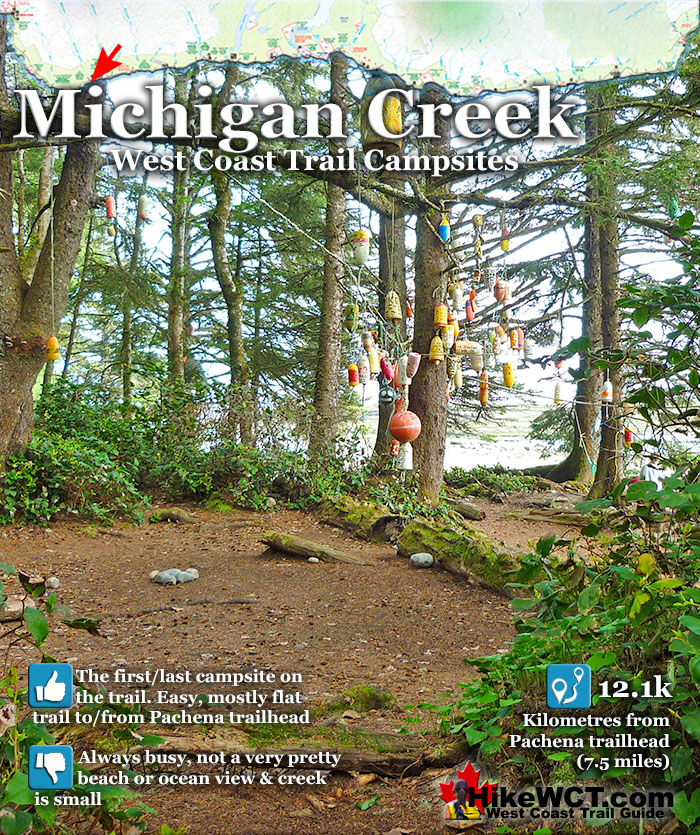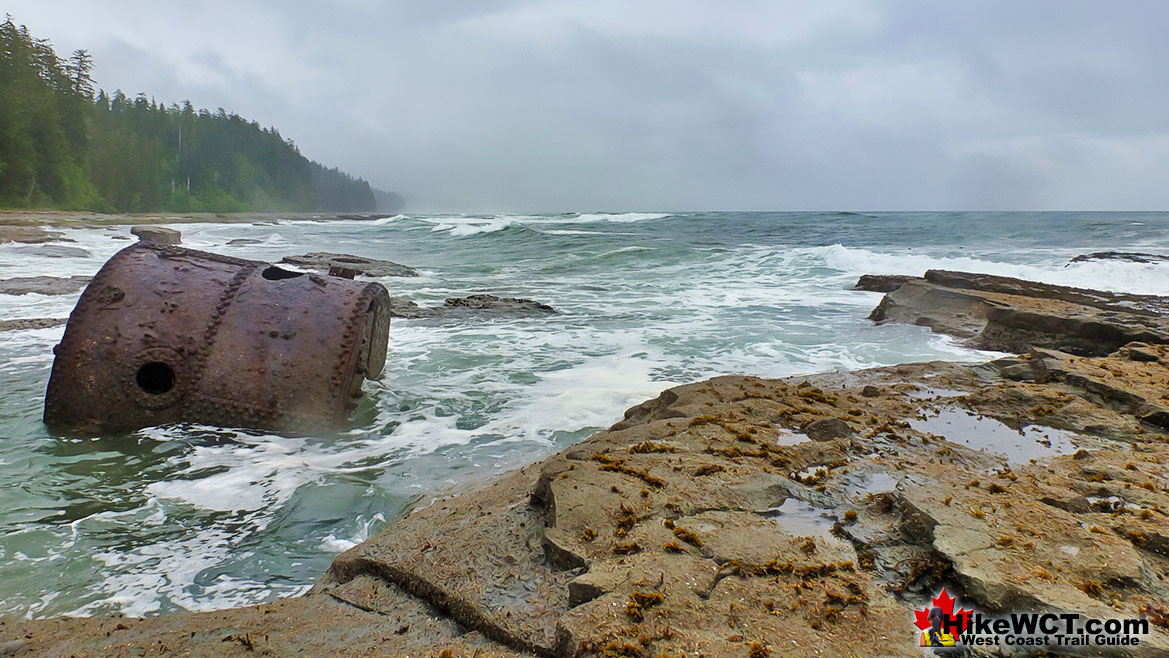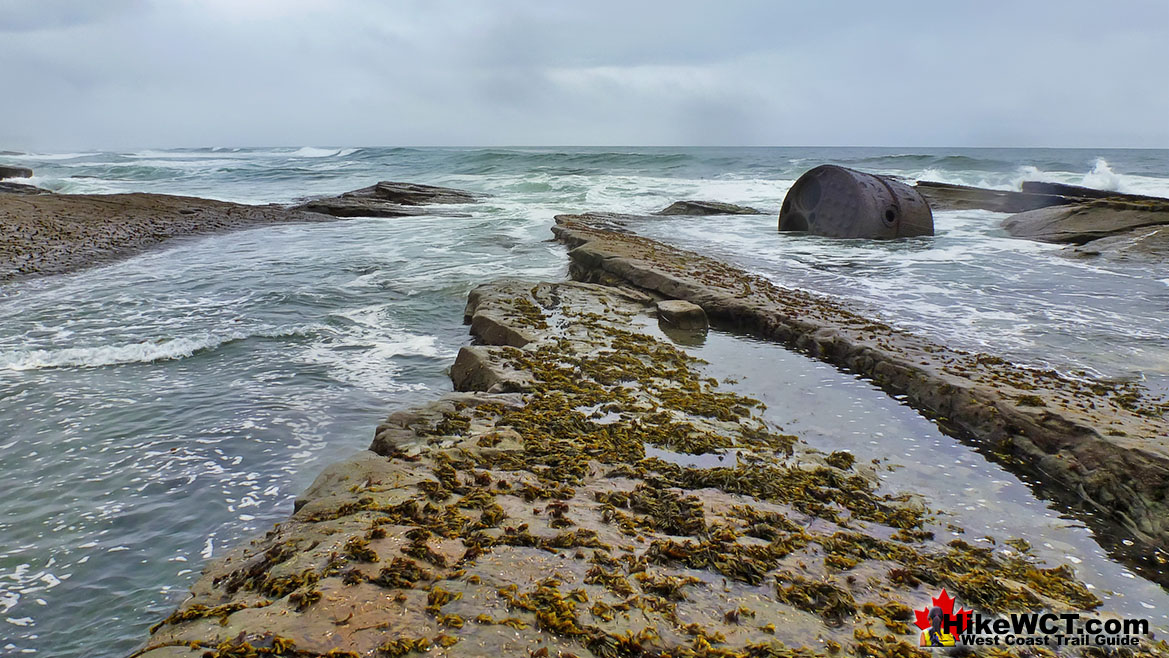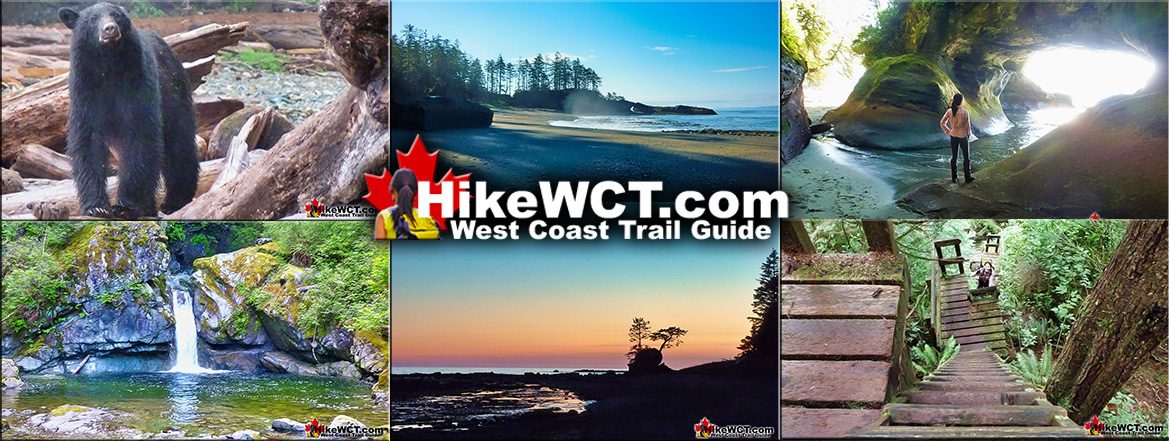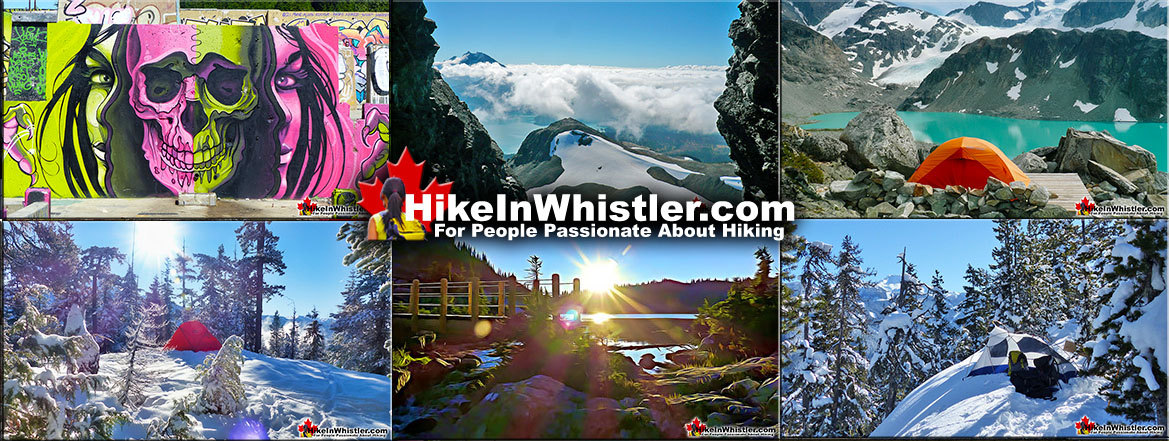![]() The campsite at Michigan Creek is the first or last campsite you will encounter on the West Coast Trail. First if you begin your hike at the Pachena trailhead(hiking south) and last if you begin in Port Renfrew(hiking north). The 12.1 kilometres(7.5 miles) between the Pachena trailhead and Michigan Creek is fairly easy and flat. Compared to the rest of the West Coast Trail, this section is wonderfully relaxing. At a brisk pace, you should be able to hike this section in a little over 3 hours.
The campsite at Michigan Creek is the first or last campsite you will encounter on the West Coast Trail. First if you begin your hike at the Pachena trailhead(hiking south) and last if you begin in Port Renfrew(hiking north). The 12.1 kilometres(7.5 miles) between the Pachena trailhead and Michigan Creek is fairly easy and flat. Compared to the rest of the West Coast Trail, this section is wonderfully relaxing. At a brisk pace, you should be able to hike this section in a little over 3 hours.
 The last/first campsite on the West Coast Trail
The last/first campsite on the West Coast Trail Fun to meet hikers on their first or last day on the trail
Fun to meet hikers on their first or last day on the trail The trail to Pachena is relaxing, fast & easy
The trail to Pachena is relaxing, fast & easy The Michigan shipwreck is close enough to touch!
The Michigan shipwreck is close enough to touch! Always crowded and chaotic with campers
Always crowded and chaotic with campers The beach is not as pretty as other WCT beaches
The beach is not as pretty as other WCT beaches Heavy rain makes Darling River hard to cross
Heavy rain makes Darling River hard to cross Driftwood firewood runs low late in the season
Driftwood firewood runs low late in the season The beach smells a bit musty at low tide
The beach smells a bit musty at low tide So busy that the beach can look like a refugee camp
So busy that the beach can look like a refugee camp
West Coast Trail Campsites
![]() Michigan Creek at 12km
Michigan Creek at 12km ![]() Darling River at 14km
Darling River at 14km ![]() Orange Juice Creek at 15km
Orange Juice Creek at 15km ![]() Tsocowis Creek at 16.5km
Tsocowis Creek at 16.5km ![]() Klanawa River at 23km
Klanawa River at 23km ![]() Tsusiat Falls at 25km
Tsusiat Falls at 25km ![]() Cribs Creek at 42km
Cribs Creek at 42km ![]() Carmanah Creek at 46km
Carmanah Creek at 46km ![]() Bonilla Creek at 48km
Bonilla Creek at 48km ![]() Walbran Creek at 53km
Walbran Creek at 53km ![]() Cullite Cove at 58km
Cullite Cove at 58km ![]() Camper Bay at 62km
Camper Bay at 62km ![]() Thrasher Cove at 70km
Thrasher Cove at 70km
At a more relaxed pace, and stopping at the Pachena Point Lighthouse, you will take 4 or 5 hours from the trailhead. Michigan Beach is not terribly pretty, though the Michigan shipwreck boiler is quite a sight. The campsite is busy and you should pick one of the neighbouring campsites. Darling River, Orange Juice Creek and Tsocowis Creek campsites are all better than Michigan. The Michigan Creek campsite has the nice and wonderfully unimposing amenities that you can't help being impressed with. You won't find plastic or dirty outhouses, that you tend to find at other national parks. On the West Coast Trail you find and endlessly varied style of large wooden outhouses. Solidly built and ornamented over the years with curiosities washed up on the beach. The outhouses at Michigan are raised up as most are due to tanks underneath, so the toilets themselves are on what can only be described as the second floor. They open up to a walkway that feels like a sundeck as it entices you to stop and enjoy the view, until you remind yourself that you are outside a toilet. The railing to the sundeck/walkway is partly constructed of a thick anchor chain stretching across the edge. Dozens of buoys, old ship ropes, and even an ancient life buoy adorn the railings.
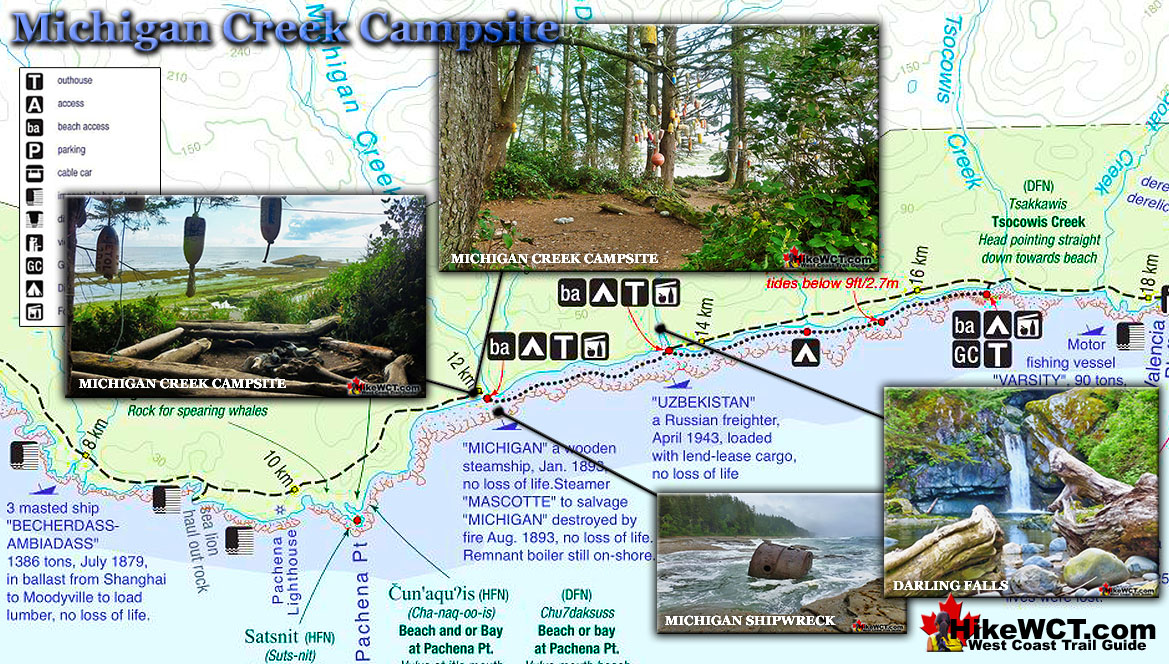
The outhouses on the West Coast Trail are always a nice variation of this, but the unexpectedly impressive thing you find is the toilets themselves. Surprisingly clean and roomy, they are large inside and constructed of very nice, thick and natural looking wood beams. The toilet seats are simple and tidy, and you often find a large, open wooden bench with cedar wood shavings inside. A large ladle is there and this simple and beautifully scented trick invites you to scoop a bunch of shavings into the toilet.
Extraordinary West Coast Trail Outhouses
More often then not on the West Coast Trail, the outhouses smell like a fresh, clean forest, instead of an outhouse. Extraordinary! Looks like an elaborate treehouse instead of a toilet!
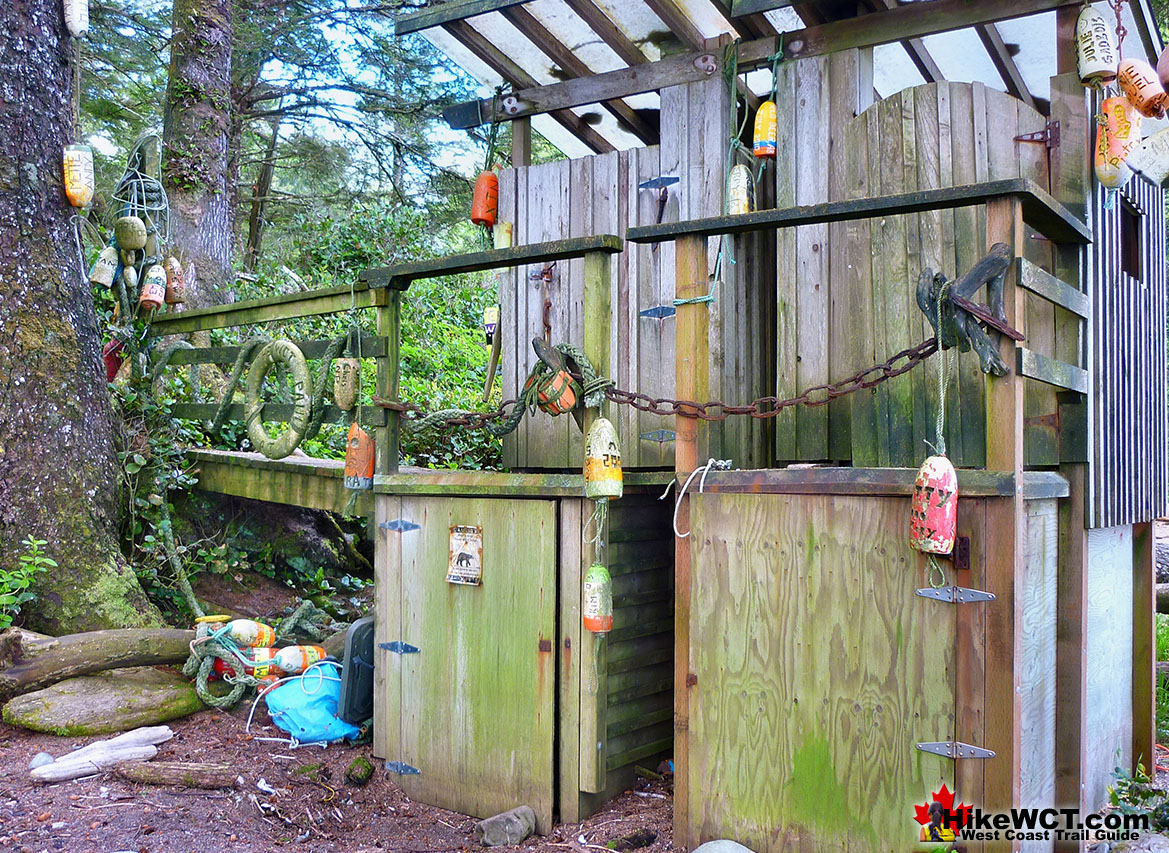
West Coast Trail outhouses are fantastically clean and organized. Beautiful, fragrant cedar construction with cedar shavings to sprinkle into the toilet after use.
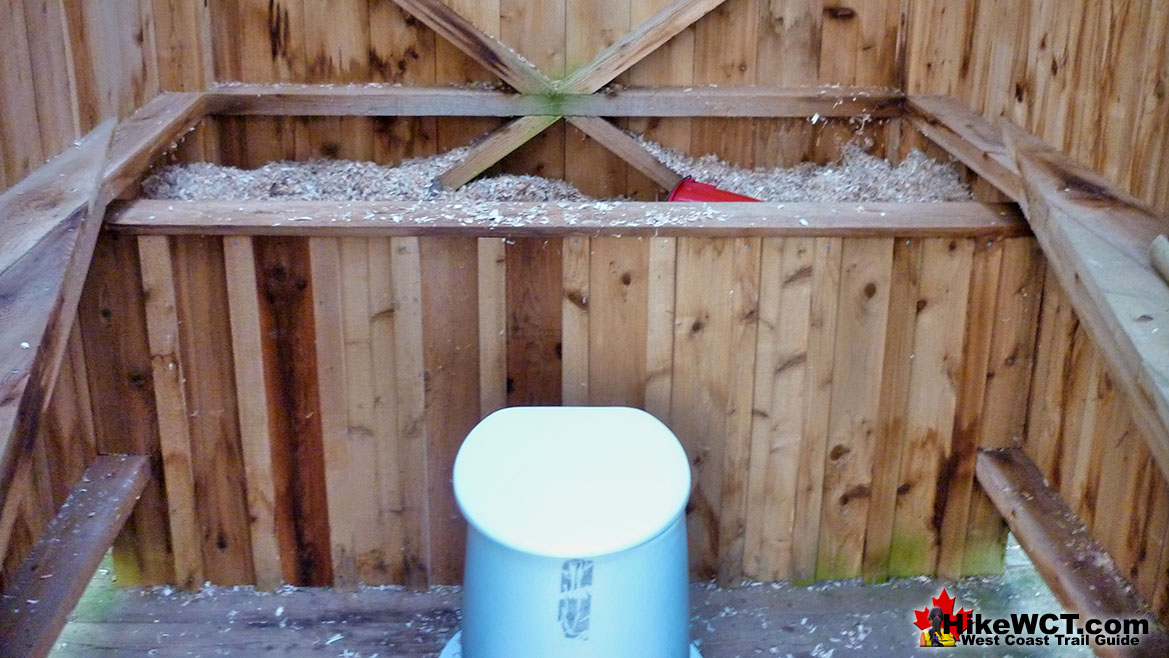
The Michigan Creek Campsite
![]() You will find a few clearings in the forest above the beach ideal for tents as well as room for dozens of tents along the beach. Though the beach is not terribly nice lower down, up next to the forest it is fairly nice. Soft, clean sand, plenty of driftwood all around and great areas to smooth out for a tent. When the tide goes out, the rock shelf is exposed and is a bit ugly with its green slimy cover of sea life. Certainly not inviting a swim like you will find at most other beaches along the trail. The campsite is wonderfully wild feeling and minimalistic. Hardly any unnatural constructions beyond the outhouses, food cache boxes and the hilarious buoys, washed in from the ocean and hung near the beach entrance/exits.
You will find a few clearings in the forest above the beach ideal for tents as well as room for dozens of tents along the beach. Though the beach is not terribly nice lower down, up next to the forest it is fairly nice. Soft, clean sand, plenty of driftwood all around and great areas to smooth out for a tent. When the tide goes out, the rock shelf is exposed and is a bit ugly with its green slimy cover of sea life. Certainly not inviting a swim like you will find at most other beaches along the trail. The campsite is wonderfully wild feeling and minimalistic. Hardly any unnatural constructions beyond the outhouses, food cache boxes and the hilarious buoys, washed in from the ocean and hung near the beach entrance/exits.
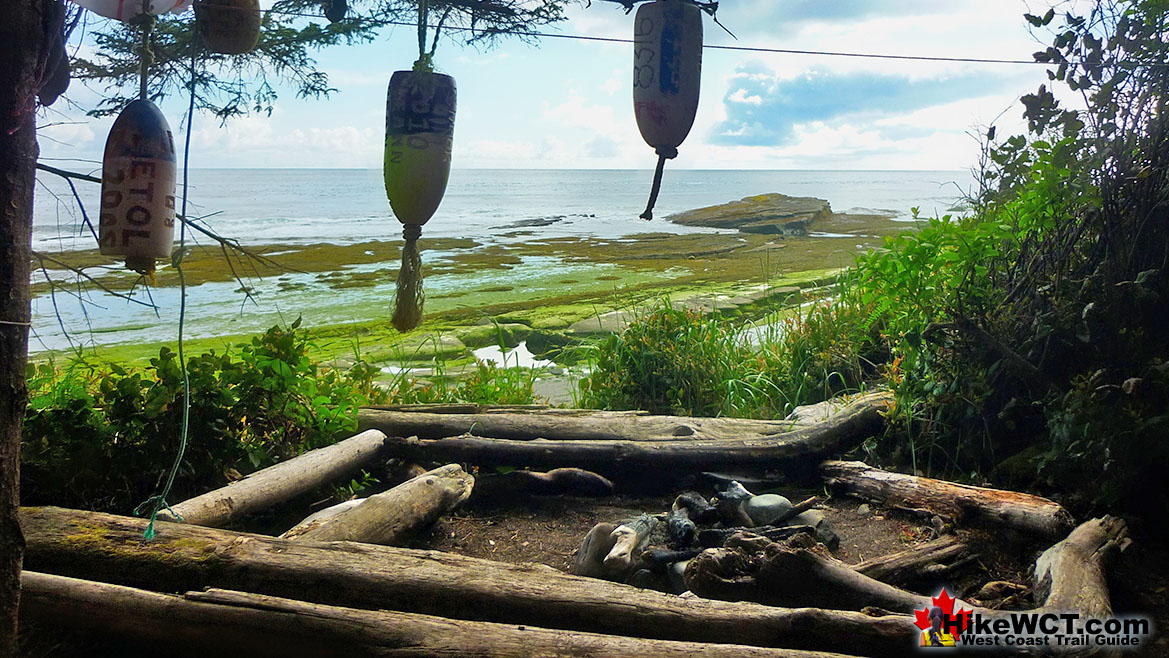

The Alaskan Shipwreck at 4km
![]() Certainly the highlight of Michigan Creek is the extraordinary remnant of the Michigan shipwreck trapped on the rocky shelf revealed by low tide. The huge boiler of the Michigan is so large that it sits ominously in a depression on the rocky shelf near where it drops off to deeper ocean. From the sandy shoreline, this rusty hulk sits about 70 metres away as large waves constantly pound it. You can easily walk out to it when the tide is low and get a close look at just a couple metres away. Getting close enough to touch it will require a short and cold plunge into the ocean with swirling water all around.
Certainly the highlight of Michigan Creek is the extraordinary remnant of the Michigan shipwreck trapped on the rocky shelf revealed by low tide. The huge boiler of the Michigan is so large that it sits ominously in a depression on the rocky shelf near where it drops off to deeper ocean. From the sandy shoreline, this rusty hulk sits about 70 metres away as large waves constantly pound it. You can easily walk out to it when the tide is low and get a close look at just a couple metres away. Getting close enough to touch it will require a short and cold plunge into the ocean with swirling water all around.
The Michigan shipwreck is the first one you can see and actually touch, which is incredible since it is well over a century old. On January 21st, 1893 this 695 ton steam schooner was heading to Puget Sound from San Francisco. The strong northerly current that prevails in this part of the Pacific and would eventually cause dozens of shipwrecks, caused the Michigan to massively overrun her position. Instead of sailing into Juan de Fuca Strait, she collided with Vancouver Island in the middle of the night.
The shoreline was relatively easy to escape to, and the 25 people on board managed to get ashore. Later, when the seas calmed the crew was able to retrieve a boat from the wreck and rowed to Neah Bay for assistance. A ship rescue was attempted, but was not successful. One death resulted from the attempt to hike over the old telegraph trail to Carmanah Point Lighthouse. A testament to how wild and difficult it was then as compared to now. The Michigan shipwreck continued here...
Should you camp at Michigan Creek?
No, there are better options close by. If you are heading north to the trailhead and heavy rain is expected you may want to camp at Michigan so you don't have to get across Darling River as the river can grow to a challenging size to cross after rainfall. Usually you can cross it where it fans out and flows into the ocean. Often it is just a couple centimetres deep. After heavy rainfall it swells to a torrent that can be challenging to cross. Darling River is a much nicer place to camp because it is less popular and sits next to the remarkable Darling Falls. A beautiful little hideaway, just a short walk up Darling River. Somehow every guidebook, website and blog on the West Coast Trail misses this little paradise. Certainly the highlight of the first(or last) day on the trail!
Campsites Near Michigan Creek (KM12)
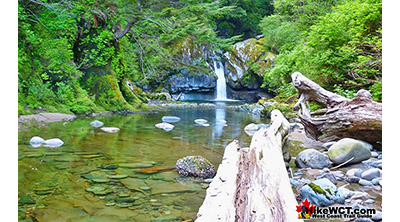 KM14: Darling River Campsite
KM14: Darling River Campsite
Just 2km past the popular and chaotic Michigan Creek campsite you will come to the Darling River crossing. Depending on the rainfall of previous days, you may walk through the river just a couple centimetres deep or thigh deep. Without significant rain, you will barely get your shoes wet crossing. After you cross, you will have arrived at the Darling River campsite. Mostly nestled along the treeline, the Darling River campsite is relatively quiet compared to Michigan Creek. The significant draw to Darling River is not the campsite, but rather the idyllic waterfalls that can be found just a few hundred metres up the river. Swimming at Darling Falls is wonderful in the emerald green water surrounded by rainforest. Darling River campsite continued here...
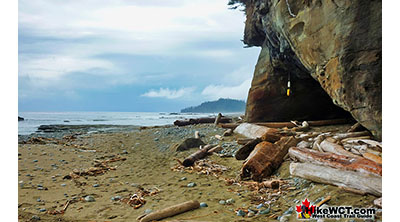 KM15: Orange Juice Creek Campsite
KM15: Orange Juice Creek Campsite
Just a kilometre past the Darling River campsite you will come to another beach campsite at Orange Juice Creek. Orange Juice Creek is not terribly pretty and gets its name from the intensely, orange juice coloured water that crashes through a tangled morass of driftwood logs. If you aren't keen on swimming and/or washing at Darling Falls, Orange Juice Creek is a good alternative. Orange Juice Creek is the third(or third to last) campsite on the West Coast Trail. Michigan Creek, Darling River, Orange Juice Creek and Tsocowis Creek are all along a fairly continuous beach that stretches for 5 kilometres. All are easily within a days hike from or to the Pachena trailhead. Orange Juice Creek campsite continued here...
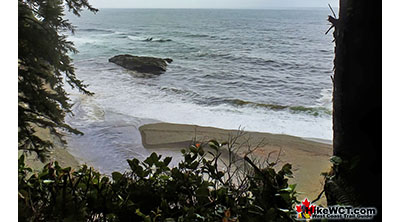 KM16: Tsocowis Creek Campsite
KM16: Tsocowis Creek Campsite
The Tsocowis Creek campsite at 16.5km has a decent beach with an excellent water source. Most hikers pass through the beach here on their way to Michigan if heading north or Tsusiat Falls if hiking south. The beach at Tsocowis is fairly decent and there is plenty of room for tents along the beach amongst the driftwood logs. Tsocowis Beach has a lot of interesting features to explore. Shipwreck debris, stunning sandstone cliffs with a wonderful sea cave. Tsocowis Falls brings excellent, fresh water just steps from your tent. Ladders near the campsite take you up above and over Tsocowis Falls. The view from the top of the ladders and on the bridge are fantastic. Tsocowis Creek campsite continued here...
Best West Coast Trail Sights & Highlights
West Coast Trail Campsites
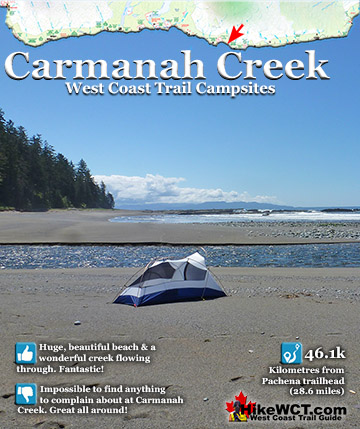
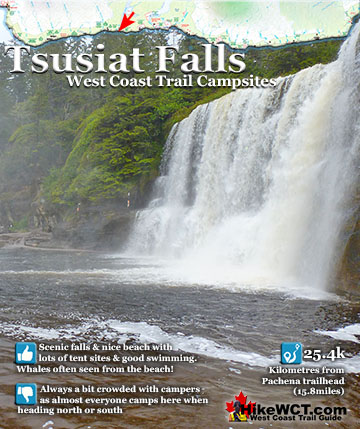
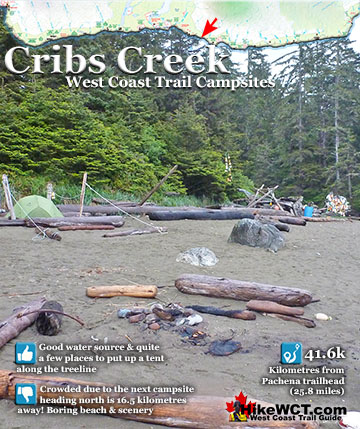
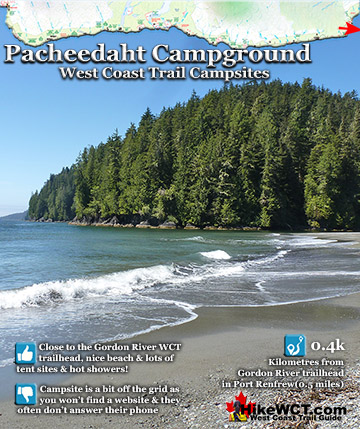
West Coast Trail A to Z
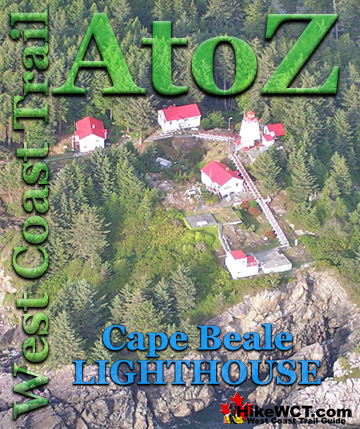
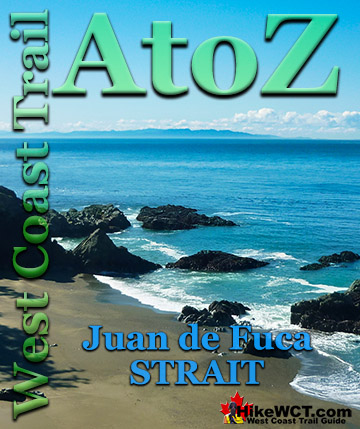
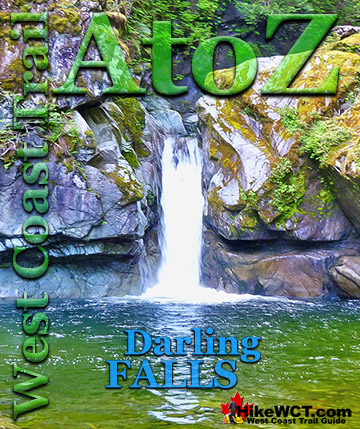
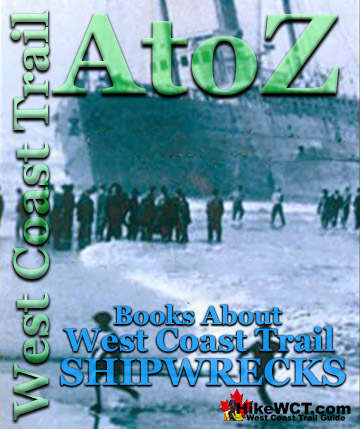
The West Coast Trail by Day
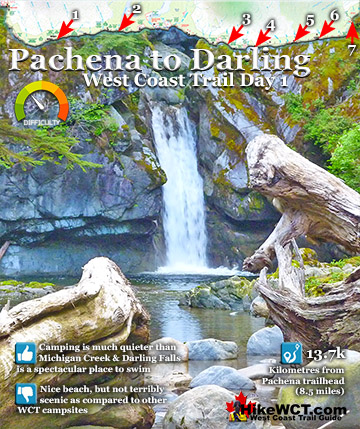
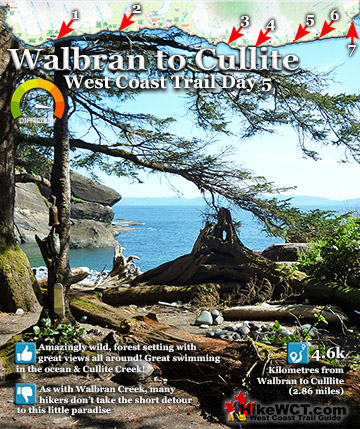
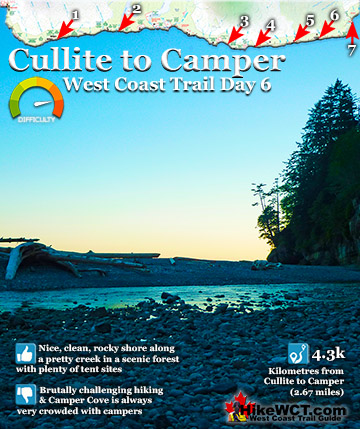
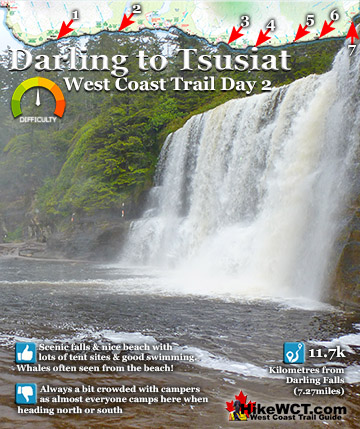
Explore BC Hiking Destinations!
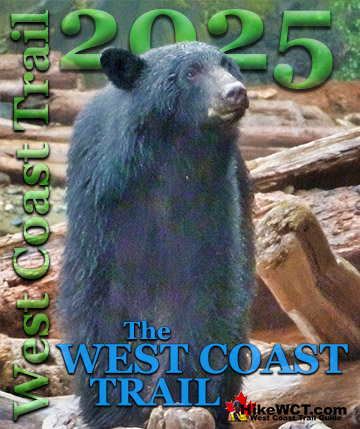
The West Coast Trail

Victoria Hiking Trails

Clayoquot Hiking Trails

Whistler Hiking Trails
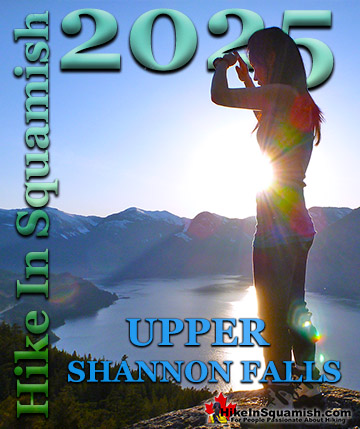
Squamish Hiking Trails

Vancouver Hiking Trails

